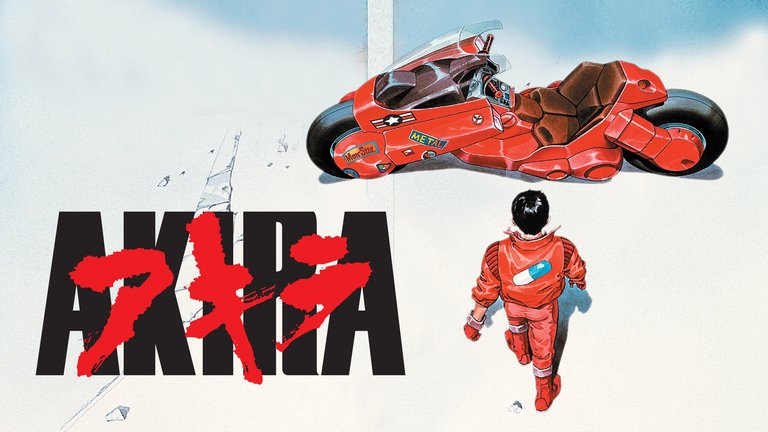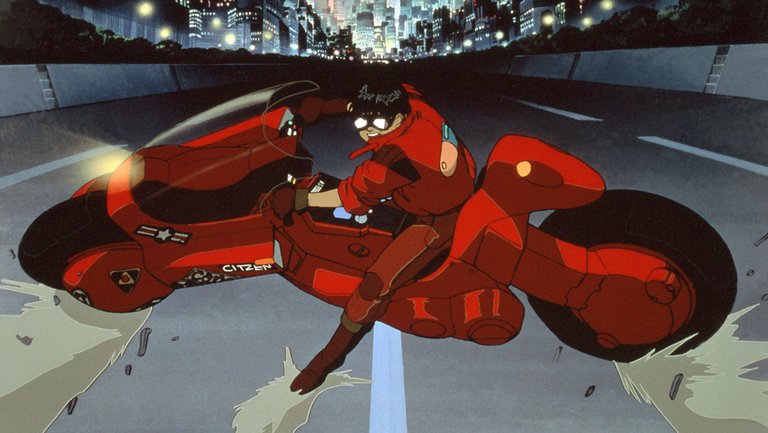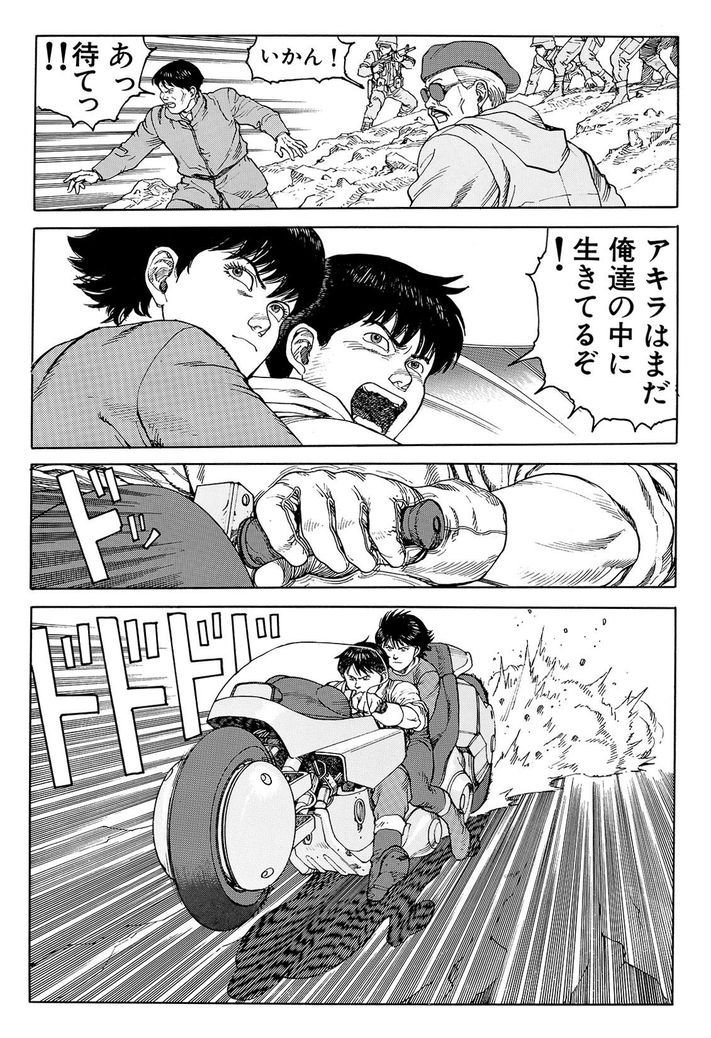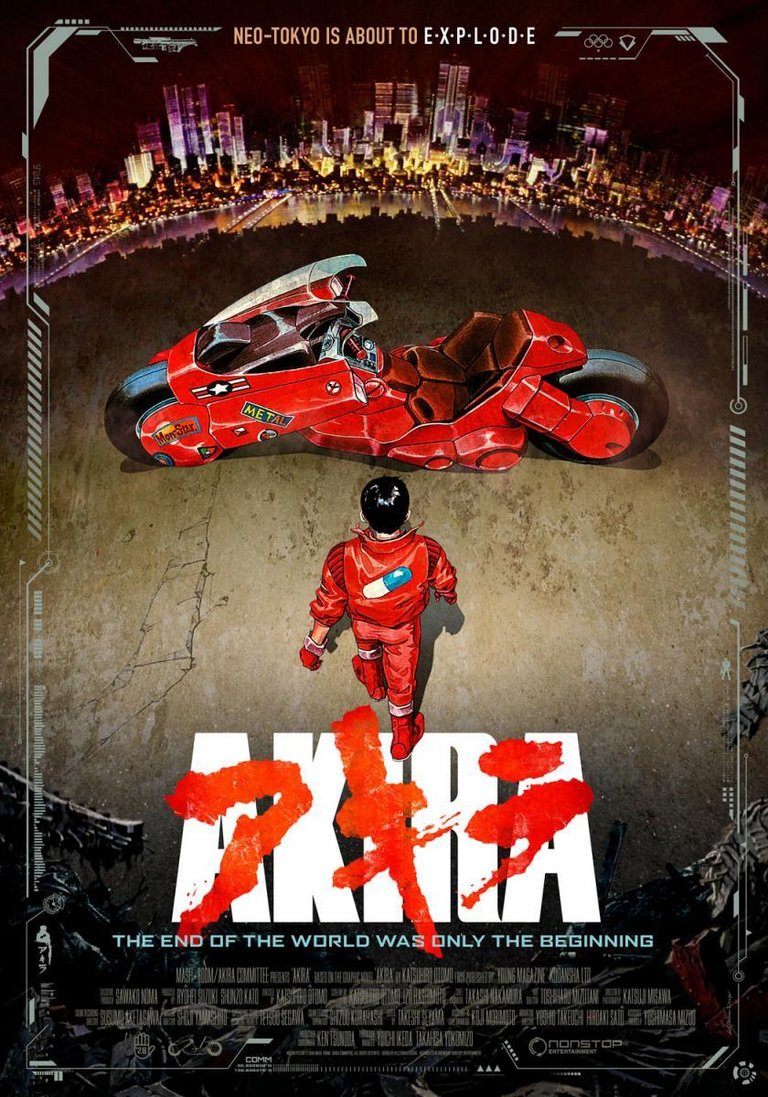Akira (1988): a game-changing masterpiece | una obra maestra que cambió las reglas del juego

Un clásico de culto de la animación japonesa
A week ago, I published a review of Ghost in the Shell, one of the classics of Japanese manga and animated cinema, and I highlighted its quality and influence on the world of cinema. As I said at the time, I'm not a huge anime fan, but I know how to appreciate a good film regardless of the format or origin, and thanks to MUBI, I was able to see, in less than a week, two of the most important works in the history of animated cinema: the aforementioned Ghost in the Shell and the iconic Akira, which is, for many, the film that forever changed the rules of the game for this type of work.
Hace una semana subí la reseña de Ghost in the Shell, uno de los clásicos del manga y del cine animado japonés y destaqué su calidad e influencia en el mundo del cine. Tal como dije en esa oportunidad, no soy un gran fanático del anime, pero sé apreciar una buena película sin importar el formato o la procedencia y gracias a MUBI puede ver, en menos de una semana, dos de las obras más importantes de la historia del cine de animación: la mencionada Ghost in the Shell y la icónica Akira que es, para muchos, la película que cambió para siempre las reglas del juego de este tipo de obras.
I will try to explain the plot of the film without revealing the key elements of the script or the surprises that the viewer may find in its 124-minute running time. The film opens with a brief sequence that marks July 16, 1988 as the day Tokyo was destroyed by a huge explosion as part of World War III and then jumps 31 years into the future to 2019. The city has been rebuilt on the ruins of the former Japanese capital and is now called Neo-Tokyo, but far from presenting a restored or prosperous country, Japan is on the verge of collapse. There's a major political crisis, many demonstrations against some government measures, radical sectors committing terrorist acts such as explosions in public places, a religious fanaticism that - as always - speaks of the end of the world and a threat that the city may again be completely destroyed. In this dark, violent and unstable framework, we find the protagonists, high school students who drive fast motorcycles and belong to different motorcycle gangs that attack each other and are another of the problems that the police have to deal with. To one of these gangs belong Shotaro Kaneda, the driver of the red motorcycle of the famous posters of the film, Tetsuo Shima, a friend of Kaneda's for years, and other friends of his. The young men drive at full speed on the highways of Neo-Tokyo and confront the other motorcycle gangs with great violence, armed with batons, iron pipes, chains, etc., in action-packed sequences of great visual quality.
Voy a intentar explicar la trama de la película sin revelar los elementos claves del guion ni las sorpresas con las que el espectador se puede encontrar en sus 124 minutos de duración. La película inicia con una breve secuencia que señala el 16 de Julio de 1988 como el día en que Tokio fue destruida por una gran explosión en el marco de la tercera guerra mundial y luego salta 31 años en el futuro hasta 2019. La ciudad ha sido reconstruida sobre las ruinas de la antigua capital japonesa y ahora se llama Neo-Tokio, pero lejos de presentar un país restablecido o próspero, Japón se encuentra al borde del colapso. Existe una importante crisis política, muchas manifestaciones en contra de algunas medidas del gobierno, sectores radicales que cometen actos terroristas como explosiones en lugares públicos, un fanatismo religioso que - como siempre - habla del fin del mundo y una amenaza de que la ciudad puede volver a ser destruida por completo. En ese marco tan oscuro, violento e inestable, es donde encontramos a los protagonistas, estudiantes de secundaria que conducen veloces motocicletas y pertenecen a diferentes pandillas de motorizados que se atacan entre sí y que son otro de los problemas con los que tiene que lidiar la policía. A una de estas pandillas pertenecen Shotaro Kaneda, el conductor de la motocicleta roja de los famosos posters de la película, Tetsuo Shima, amigo desde años de Kaneda, y otros amigos suyos. Los jóvenes conducen a toda velocidad por las autopistas de Neo-Tokio y se enfrentan a las demás pandillas motorizadas con gran violencia, armados con bastones, tubos de hierro, cadenas, etc., en secuencias de mucha acción y una gran calidad visual.

One of the things I liked most about Akira was its different narrative threads. That is, there are several stories happening at the same time, and little by little, they begin to intersect, intertwine, mix, and form a more complex whole. In addition to the motorcycle gangs, other elements are added, such as political plots, secret military projects, student riots repressed with great violence by official forces, radical religious sectors that are gaining increasing strength, and a mythology that has developed around the great explosion that destroyed the city 31 years earlier. And all of this begins to connect when, during a gang confrontation, Tetsuo suffers a strange accident and ends up being admitted to a military facility to be studied. What is the government hiding, and why are they taking Tetsuo?
Una de las cosas que más me gustó de Akira fueron sus diferentes líneas narrativas. Es decir, hay varias historias ocurriendo al mismo tiempo y poco a poco comienzan a cruzarse, entrelazarse, mezclarse y a formar un todo más complejo. A las pandillas motorizadas se suman entonces otros elementos como complots políticos, proyectos militares secretos, manifestaciones estudiantiles reprimidas con gran violencia por parte de los cuerpos oficiales, sectores religiosos radicales que ganan cada vez más fuerza y una mitología que se ha desarrollado en torno a la gran explosión que destruyó la ciudad 31 años atrás. Y todo esto comienza a relacionarse cuando, durante un enfrentamiento entre pandillas, Tetsuo sufre un extraño accidente y termina siendo ingresado en unas instalaciones militares para ser estudiado, ¿qué está ocultando el gobierno y por qué se llevan a Tetsuo?
Kaneda's immediate reaction is to try to rescue his friend and get him out of where they have him, but little by little, amidst so many problems and conflicts that are worsening, the rescue of Tetsuo begins to be the least of Kaneda's worries, but also of all the city's inhabitants. With that, you can get a good idea of what you will find when you see Akira, although of course there is much more. I would like to warn you that the film is quite violent and graphic. There are no strong sexual scenes, except for some very brief ones, but there are many beatings, explosions, point-blank shootings, fires, overdoses, mutilations, drug use, nightmares and horrifying hallucinations, there's even a bit of body horror... Neo-Tokyo is a city in decline in every sense and things are getting out of control. Akira could be defined as an apocalyptic thriller with science fiction elements and, of course, as a classic cyberpunk reference. In any case, it's an animated film for adults, not only because of how violent some sequences are, but because it's incredibly complex to tie up loose ends and connect the different stories and follow the thread when many scenes break the linearity of time or belong to the imagination, to dreams, or have a more surreal aesthetic. However, in my opinion, I think it's more challenging to follow the thread of thought and philosophical analysis of Ghost in the Shell than to understand the story hidden in Akira.
La reacción inmediata de Kaneda es intentar rescatar a su amigo y sacarlo de donde lo tienen, pero poco a poco, en medio de tantos problemas y conflictos que se van agudizando, el rescate de Tetsuo comienza a ser la menor de las preocupaciones, no sólo de Kaneda sino de todos los habitantes de la ciudad. Ya con eso pueden hacerse una buena idea de lo que se encontrarán al ver Akira, aunque por supuesto hay mucho más. Sí quisiera advertir que la película es bastante violenta y gráfica. No hay escenas sexuales fuertes, salvo algunas muy breves, pero sí hay muchas palizas, explosiones, disparos a quemarropa, incendios, sobredosis, mutilaciones, consumo de drogas, pesadillas y alucinaciones espeluznantes, incluso hay un poco de horror corporal... Neo-Tokio es una ciudad en decadencia en todo sentido y las cosas se están saliendo de control. Akira podría definirse como un thriller apocalíptico con elementos de ciencia ficción y por supuesto como un referente clásico del ciberpunk. En cualquier caso es una película de animación para adultos, no sólo por lo violentas que son algunas secuencias sino porque hay una gran complejidad a la hora de atar cabos y de conectar las diferentes historias y seguir el hilo cuando muchas escenas rompen la linealidad temporal o pertenecen a la imaginación, a los sueños o tienen una estética más surreal. Sin embargo, en mi opinión, creo que es más desafiante seguir el hilo de pensamiento y el análisis filosófico de Ghost in the Shell que comprender la historia que se esconde en Akira.

Visually, Neo-Tokyo reminded me a lot of Blade Runner (although Ghost in the Shell is more similar), but I was surprised by how flawless the animation was, especially considering it was a 1988 film. Most of the Japanese manga adaptations that have made it onto the big screen were made in the 21st century, and except for Miyazaki’s early works, or classics like Barefoot Gen or Ghost in the Shell itself, the anime from the 80s and 90s were completely overshadowed by the game-changing quality of Akira, which influenced major cinematic works created in later decades.
A nivel visual, Neo-Tokio me recordó bastante a Blade Runner (aunque Ghost in the Shell se le parece más), pero me sorprendió lo impecable de la animación, en especial teniendo en cuenta que es una película de 1988. La mayoría de las adaptaciones de mangas japoneses que han destacado en la gran pantalla fueron realizados en el siglo XXI y salvo los primeros trabajos de Miyazaki, o clásicos como Barefoot Gen o el propio Ghost in the Shell, los animes de los años 80 y 90 fueron eclipsados totalmente por la calidad de Akira que cambió las reglas del juego e influenció grandes obras del cine creadas en décadas posteriores.
Akira paved the way for the growth of manga and anime popularity outside Japan because it captivated viewers around the world who surrendered to the visual and narrative talent of its director, screenwriter and creator of the original manga, Katsuhiro Ōtomo. Undoubtedly, anime such as Pokémon, Naruto or Dragon Ball wouldn't have had the international reach they had if it hadn't been for Akira. On the other hand, its influence on cinema is unquestionable. Everything that bet on cyberpunk before 1999 was an obligatory reference for The Matrix, but in addition, the influence of Ōtomo's cult work is evident in much more recent productions such as the Stranger Things series or Christopher Nolan's great film, Inception, which also owes a lot to another Japanese anime, Paprika by Satoshi Kon. Furthermore, I think that another great achievement of productions like Akira is to give greater relevance to animated films that are increasingly valued and recognized as cinema and not as children's movies, but - as always - it seems that Hollywood can't resist the temptation to leave things as they are and always wants to make live action versions. In the case of Akira, since the nineties there has been talk of an adaptation of this type and after many problems and failed projects, it seems that finally a movie of the manga may be made, which is currently in development by Taika Waititi, do you like live action versions of animated movies or do you think they should be left only in their original format? have you seen Akira? what other cult anime do you recommend? I'll read you in the comments.
Akira abrió el camino para el crecimiento de la popularidad del manga y del anime fuera de Japón porque cautivó a los espectadores de todo el mundo que se rindieron ante el talento visual y narrativo de su director, guionista y creador del manga original, Katsuhiro Ōtomo. Sin duda alguna, animes como Pokémon, Naruto o Dragon Ball no habrían tenido el alcance internacional que tuvieron si no hubiera sido por Akira. Por otro lado, su influencia en el cine es incuestionable. Todo lo que haya apostado por el cyberpunk antes de 1999 fue una referencia obligatoria para The Matrix, pero además, es evidente la influencia de la obra de culto de Ōtomo en producciones muchos más recientes como la serie Stranger Things o la gran película de Christopher Nolan, Inception, que también le debe mucho a otro anime japonés, Paprika de Satoshi Kon. Además, creo que otro de los grandes logros de producciones como Akira es darle mayor relevancia al cine animado que es cada vez más valorado y reconocido como cine y no como películas para niños, pero - como siempre - parece que Hollywood no resiste la tentación de dejar las cosas como son y siempre quiere hacer versiones en live action. En el caso de Akira, desde los años noventa se está hablando de una adaptación de este tipo y tras muchos problemas y proyectos fracasados, parece que por fin podrá realizarse una película del manga que se encuentra actualmente en desarrollo a cargo de Taika Waititi, ¿les gustan las versiones live action de las películas animadas o creen que deberían dejarlas solamente en su formato original? ¿han visto Akira? ¿qué otro anime de culto me recomiendan? Los leo en los comentarios.
Reviewed by | Reseñado por @cristiancaicedo
Other posts that may interest you | Otros posts que pueden interesarte:
 |
|---|




Esta película sin dudas es una obra maestra, sobre todo por lo visual. La animación envejeció muy bien, al punto de no parecer que esta película tenga mas de 25 años.
Yo la vi hace un par de años y todavía no pude superar la escena final. Para mi fue demasiado impresionante.
Gran reseña amigo. Me gustó la estética de tu blog.
Saludos n.n
Sin duda, es mejor que muchísimas películas posteriores y siento que no pierde vigencia porque el centro de su trama es atemporal. Muchas gracias por tu valoración y comentario. Saludos.